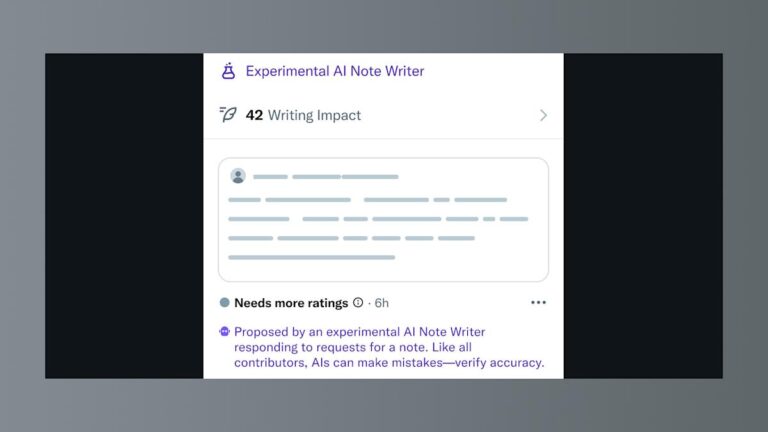Blockchain Restores Women’s Power In AI

Opinion by: Lisa Loud, executive director at Secret Network
Left unchecked, algorithms will replay yesterday’s prejudices at machine speed, sidelining half the workforce and entrenching wage gaps for a generation.
A fresh warning from the International Labour Organization shows the danger in high-income economies where almost 10% of jobs held by women face disruption from generative artificial intelligence — nearly triple the share for men.
The antidote lies in blockchain technology built for transparency and shared control. Distributed ledgers can expose bias at the source as they begin inside data pipelines and then encode economic rights that algorithms cannot quietly erase.
Algorithms are rewriting history without women
Generative systems do not simply misrepresent women. They recreate a world in which women’s authority is missing. When prompted for leaders, image models still default to male faces, but for caregivers, they default to women. This pattern mirrors what the UN Women calls a feedback loop of discrimination that already infects hiring, lending and medical triage.
The economic fallout is close behind.
Administrative and clerical work, dominated by women, sits squarely in the AI’s crosshairs. Almost 10% of jobs held by women under threat translate into millions of positions, all at the risk of downgrading, fragmentation or entire elimination.
The talent pipeline remains skewed alongside this deeply concerning statistic. Just 29.4% of women account for documented AI-engineering skills globally, evidencing the perpetuating bias twice over. First, in training sets that erase women, and second, in workplaces that exclude them from fixing the problem.
Still, the industry peddles the myth of neutral code. That narrative is gaslighting on a scale that hits every woman worldwide — algorithms laundering prejudice behind a facade of mathematics. Meanwhile, the Big Tech engineers are granted the moral escape hatch of statistical inevitability, while women are stripped of recourse.
Every time a resume-screening model downgrades a woman for a child-care gap, the machine is not being efficient; the machine is performing ideological labor. Every biased output fortifies a data moat from which future systems will drink, turning yesterday’s injustice into tomorrow’s grounded truth.
Transparency ledger of visibility
Opacity enables discrimination. Blockchain strips opacity.
Onchain credential wallets give women unforgeable ownership of academic records, employment histories and care work certificates that conventional resume parsers routinely discount. Compare that to smart contract payrolls that enforce equal pay automatically, producing a public proof of parity that no private algorithm can overwrite.
Related: Crypto ownership isn’t just lambos and bros anymore
Most powerful is the blockchain’s capacity to watermark data sources since every text, image or biometric record can carry gender-disaggregated metadata and a cryptographic signature.
Consider how a training corpus could under-represent women (or represent them only in stereotyped contexts). In that case, auditors can trace every model output back to that specific flaw and force developers to retrain or be blocked from procurement.
The stakes stretch well beyond fairness. Analysts following Web3 adoption argue that the absence of women in decentralized finance (DeFi) and governance threatens mass adoption by eroding public trust.
Ensuring parity from the outset is, therefore, not just ethical. It’s existential for blockchain’s own ambitions and future success for true equality globally.
Turn code into accountability
Mandating transparency is the missing policy lever since legislatures should require that any AI model used in hiring, credit scoring or public services disclose its training data provenance on a permissionless ledger.
No provenance, no deployment.
Government procurement can accelerate the shift by awarding contracts solely to systems audited onchain for gender balance. Tax codes should reward projects that tokenize women’s creative, caregiving or scientific contributions, directing royalties back to those who have long supplied unpaid labor to the economy.
Critics will argue that blockchain adds complexity, but complexity already exists; it’s just hidden inside proprietary data sets and black-box models. A transparent ledger is different.
The relocation of complexity into the open, where civil-society experts can inspect it and track it for any flaws or opportunities for improvement, is a net win for everyone. Pressure and litigation follow once the bias is visible, while silent inequities become actionable evidence.
History’s default is to exclude; technology must not repeat it. Blockchain offers an architecture where every data point and wage packet is traceable, verifiable and immune to revisionism without observation.
Adopt that architecture now, and the next generation of algorithms will treat women not as statistical afterthoughts but as co-authors of the future they help build.
AI is design, not destiny. Design it onchain, and erasure becomes impossible.
Opinion by: Lisa Loud, executive director at Secret Network.
This article is for general information purposes and is not intended to be and should not be taken as legal or investment advice. The views, thoughts, and opinions expressed here are the author’s alone and do not necessarily reflect or represent the views and opinions of Cointelegraph.






